41 model of human occupation diagram
The Model of Human Occupation (MOHO) was first developed in the 1980s by Gary Kielhofner. Since then, other occupational therapists have also been involved in its further development, revision and refinement of the concepts. MOHO is an occupation-focused framework that aims to explain aspects of engaging in occupations and how illness and disability related problems arise. MOHO is said to be ... We offer model of human occupation diagram and numerous book collections from fictions to scientific research in any way. in the course of them is this model of human occupation diagram that can be your partner. Using Occupational Therapy Models in Practice-Merrill June Turpin 2011-10-24 This book is a succinct and practical guide for students and practitioners applying occupational therapy ...
the Model of Human Occupation and feedback related to this article. In addition, we would like to acknowledge the support from the University of Illinois at Chicago (UIC) Research Open Access Publishing Fund. Footnote: A brief summary of the impact of the Model of Human Occupation during the
Model of human occupation diagram
The Model of Human Occupation (MOHO) 9 is the best-researched model of practice in occupational therapy. Kielhofner and colleagues have published extensively on all aspects of this model, and thus this model provides well-supported evidence to support its use in practice. The Model of Human Occupation (MOHO) is a client-centered conceptual model used in occupational therapy. This lesson defines the principles of MOHO and explores the three elements of humans that ... Implementing the Model of Human Occupation across a mental health occupational therapy service mental health services. This document calls for develop-ment in several areas, including a focus on occupation and adding value to occupational therapy (COT 2006). Literature review Occupational therapy literature acknowledges that the pro-
Model of human occupation diagram. The Model of Human Occupation and its corresponding assessments and resources are the result of three decades of extensive contributions and collaborations from the late Dr. Gary Kielhofner, Professor and Head of the Department of Occupational Therapy at the University of Illinois at Chicago. MOHO Web is dedicated to his memory. adaptation, model of adaptation through occupation, Model of Human Occupation and the model of occupation. The theory of occupational adaptation is based on the following assumptions about occupational performance and human adaptation: Competence in occupation is a lifelong process of adaptation to demands to perform Fast forward to the 1980's, when our profession re-invested in occupation and a holistic, client centered focus for treatment (Cole and Tufano, 2020). The Model of Human Occupation (MOHO) and the Person-Environment-Occupational Performance (PEOP) Models were both a result and driver of this change. The Model of Human Occupation was identified by 11 percent of practitioners. According to the NBCOT report, it was the occupation-based model most frequently used by practitioners and its use is comparable to that of other major occupational therapy models [e.g., biomechanical (17%), neurodevelopmental (14%) sensory integration (13%)]. For the full report see: National Board for Certification ...
Implementing the Model of Human Occupation across a mental health occupational therapy service mental health services. This document calls for develop-ment in several areas, including a focus on occupation and adding value to occupational therapy (COT 2006). Literature review Occupational therapy literature acknowledges that the pro- fession has some way to go in achieving the vision outlined ... The Model of Human Occupation (MOHO) (Kielhofner, 2008; Taylor, 2017) has become a widely recognised model of practice within occupational therapy (Crist et al., 2000; Lee, 2010; McColl, 2015).The MOHO and its concepts and assessments have been subject to scientific scrutiny, have an extensive evidence-base and are commonly used in practice, particularly in mental health settings (Ashby and ... Occupational Adaptation Model (OAM) is proposed as a frame of reference that aims to integrate the two main domains (occupation and adaptation) for occupational therapy. It defines occupation as self-perceived meaningful activities that require active participation and lead to a product. #InfOT presents the Model of Human Occupation #MOHOAll information about MOHO was found here: Kielhofner, G. 2008. Model of Human Occupation Theory and Appli...
First published in 1980, the Model of Human Occupation grew out of Gary Kielhofner's master's thesis and practice in the mid-1970s. While Kielhofner was the primary person working on MOHO, it has always been a collaborative effort. The Model Of Human Occupation (MOHO) frame of reference in occupational therapy is based on theories and assumptions given by the Mary Reilly. The model of human occupation was initially based on Occupational Behavior model (developed by Mary Reilly) and later on, it was introduced to the occupational therapy profession by the Gary Kielhofner and Janice Burke in 1980. This model had undergone ... The Model of Human Occupation (Review Diagram) History - 1st client-centered model - Shift away from medical model to client-centered, Holistic approach (1970's) - Recognized that many factors beyond motor, cognitive, and sensory affect occupational engagement MOHO Model. The Model of Human Occupation (MOHO) was the first occupation-focused model to be introduced in the profession developed by G. Kielhofner, J. Burke and M. Reilly in 1980. The Person-Environment-Occupation-Performance (PEOP) model began its development in 1985 by Baum, C.M and Christiansen, C.H, and was first published in 1991.
and using occupation as a primary method for both evaluation and intervention all depend on a concurrent commitment to true top-down and client-centered practice. When we embrace these fundamental principles of occupation-based and occupation-focused services, occupational therapists will:

Out On A Limb Applying The Person Environment Occupation Performance Model To Examine Injury Linked Factors Among Light Rail Drivers Sciencedirect
The Model of Human Occupation (or MOHO) is a very important occupation-based framework and is woven into the fabric of occupational therapy. It utilizes a top-down holistic approach to looking at the individual, their meaningful activities or occupations, and relationship with their environment. It is also reported to be the most frequently ...
MOHO is an occupation-focused framework that aims to explain aspects of engaging in occupations and how illness and disability related problems arise.
Download scientific diagram | Model of human occupation scheme. from publication: Community Participation in People with Disabilities | Community Participation and Consumer Participation ...
This model aims to describe the symbiotic relationship between occupation and the brain, as a chaotic, self-organized, and complex system. It assumes that changes in human condition do not follow a linear path. The model views occupational therapy as a complex intervention and a result of dynamic integration of several factors and unpredictable outcomes. The concept of neuro-occupation is ...
The model is proposed as the first step in the development of a paradigm of occupation for the field of occupational therapy and is designed for application in practice and research. It draws upon the theory of open systems to build a structural framework. Concepts relevant to human occupation are integrated into this framework.
The MOHO is a widely used occupation-focused model which emphasizes a person's agency and adaptation from participation in meaningful activities within their ...
The Model of Human Occupation (MOHO) was first developed in the 1980s by Gary Kielhofner. Since then, other occupational therapists have also been involved in its further development, revision and refinement of the concepts. MOHO is an occupation-focused framework that aims to explain aspects of engaging in occupations and how illness and ...
MOHO Concepts. * MOHO addresses how occupation is motivated, patterned, and performed. * Humans in this model are conceptualized as being comprised of three interrelated components: volition, habituation, and performance capacity. * Volition refers to the motivation for occupation.
Some of the theory's concepts are similar to those of other models such as spatiotemporal adaptation, model of adaptation through occupation, Model of Human Occupation and the model of occupation. The theory of occupational adaptation is based on the following assumptions about occupational performance and human adaptation:

Occupational Mobility And Automation A Data Driven Network Model Journal Of The Royal Society Interface
The Model of Human Occupation or (MOHO) as most occupational therapists call it, was the first model made as a guide for occupational therapy. It is an evidence-based, occupation-based, occupation-focused, holistic, theory-driven and client-centered approach to occupational therapy. This model focuses on how humans participate in their daily occupations and how occupational practitioners ...
The Model of Human Occupation (MOHO) is a conceptual framework that addresses how and why we engage in occupational behavior. The model describes three inherent and interrelated elements of human beings that explain our occupational behavior. Volition refers to how we make choices regarding daily activities.
3 Model of Human Occupation and occupational rehabilitation. The following aspects of MOHO support its application to occupational rehabilitation: (1) MOHO is an occupation-based theoretical model that can guide occupational rehabilitation practice; (2) MOHO has previously been used to guide occupational rehabilitation intervention and programs; (3) MOHO considers the importance of environment ...
The model of human occupation was initially based on Occupational Behavior model (developed by Mary Reilly) and later on, it was introduced to the occupational therapy profession by the Gary Kielhofner and Janice Burke in 1980. This model had undergone continuous development since it's starting. Initially, it was originated as a model, but ...

Safeguarding The Lives Of Children Affected By Boko Haram Application Of The Safe Model Of Child Protection To A Rights Based Situation Analysis Health And Human Rights Journal
The Model of Human Occupation is an occupational therapy practice model that addresses people's "motivations for occupations, the routine patterning of occupational behavior, nature of skilled performance and the influence of the environment on occupation" ( Kielhofner & Barrett, 1998, p. 527).
Implementing the Model of Human Occupation across a mental health occupational therapy service mental health services. This document calls for develop-ment in several areas, including a focus on occupation and adding value to occupational therapy (COT 2006). Literature review Occupational therapy literature acknowledges that the pro-
The Model of Human Occupation (MOHO) is a client-centered conceptual model used in occupational therapy. This lesson defines the principles of MOHO and explores the three elements of humans that ...
The Model of Human Occupation (MOHO) 9 is the best-researched model of practice in occupational therapy. Kielhofner and colleagues have published extensively on all aspects of this model, and thus this model provides well-supported evidence to support its use in practice.





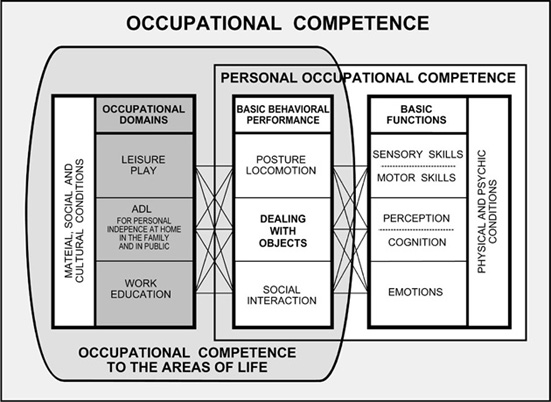


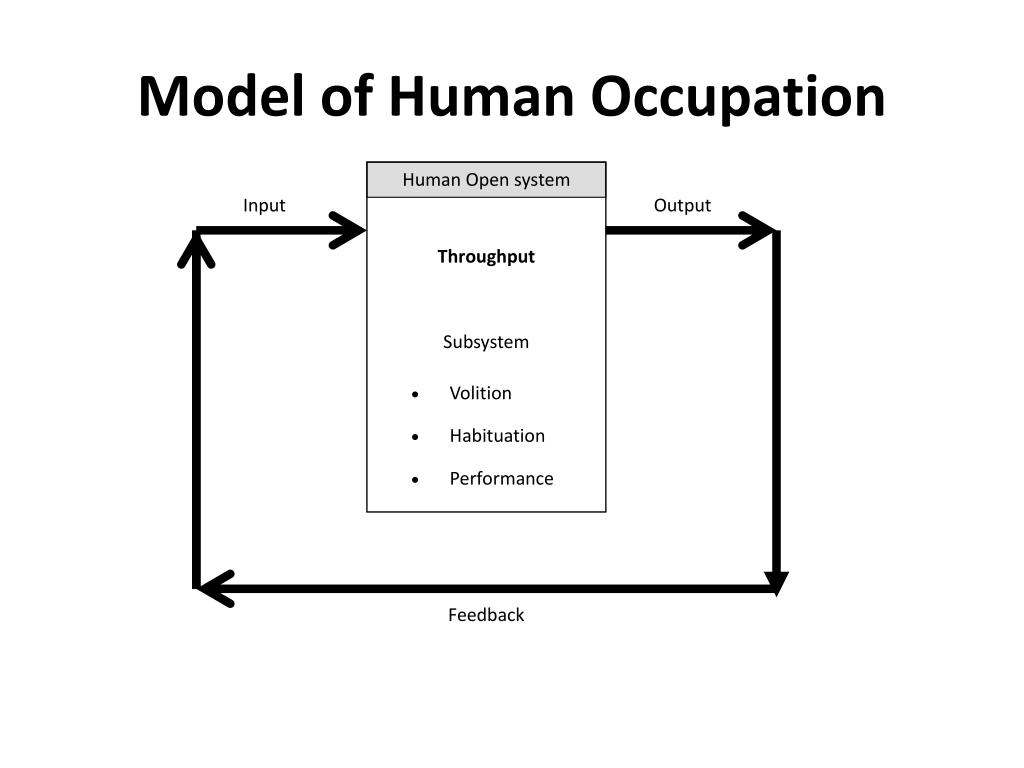
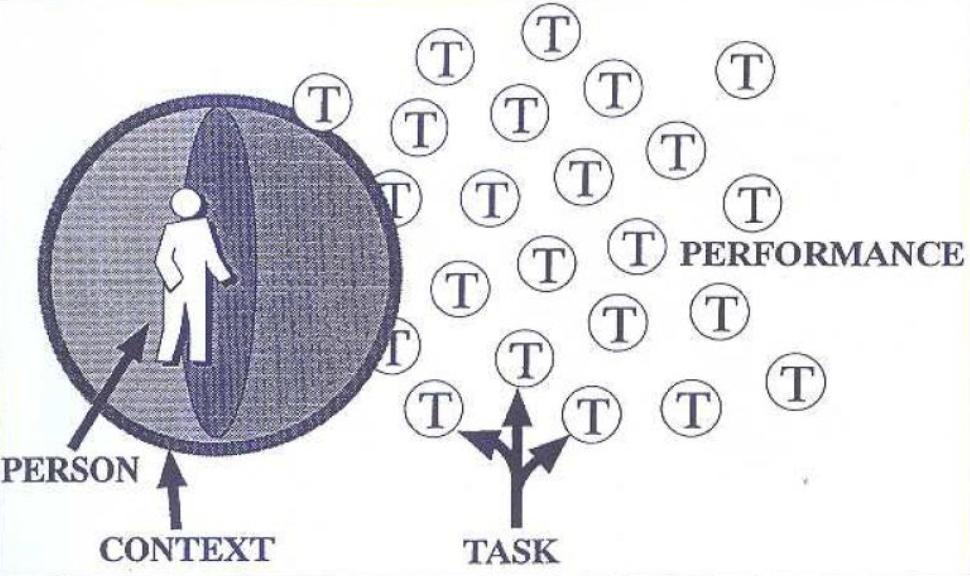

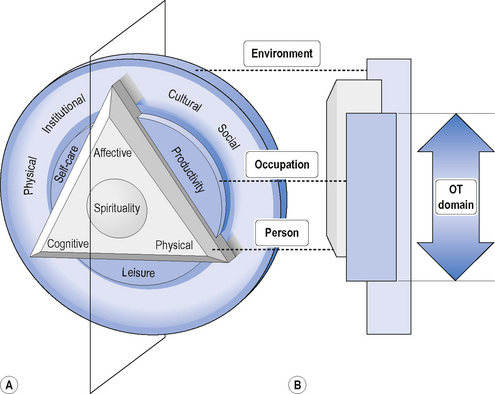
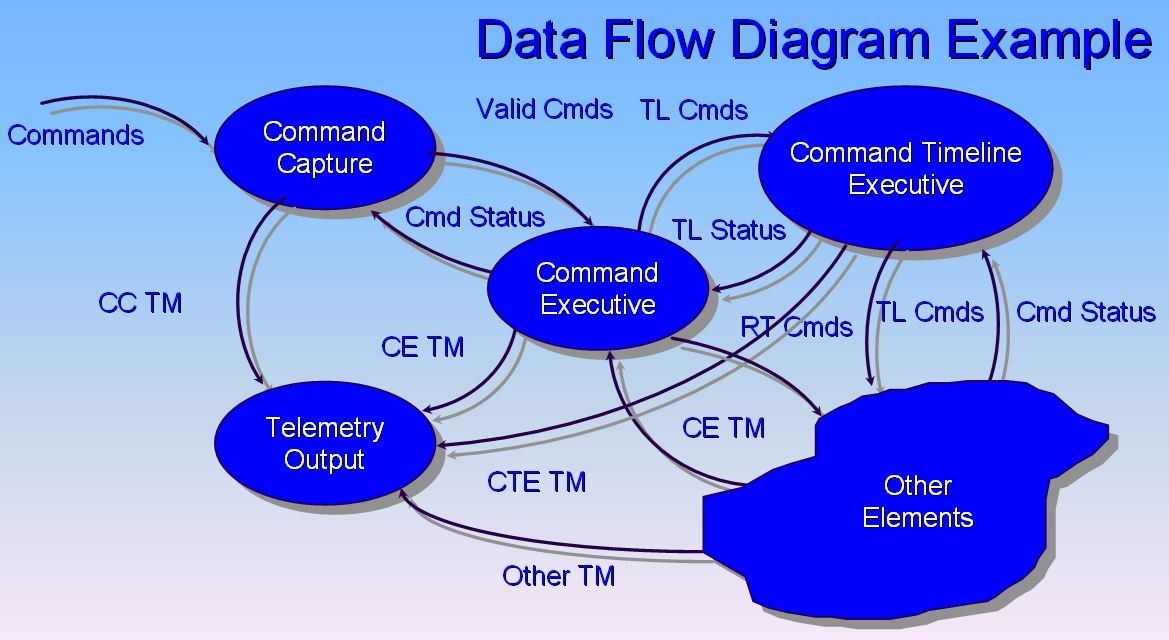
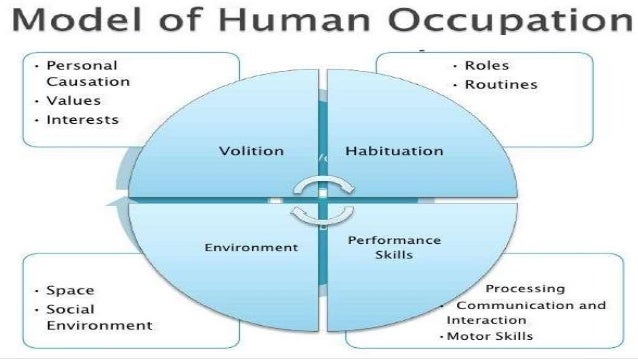
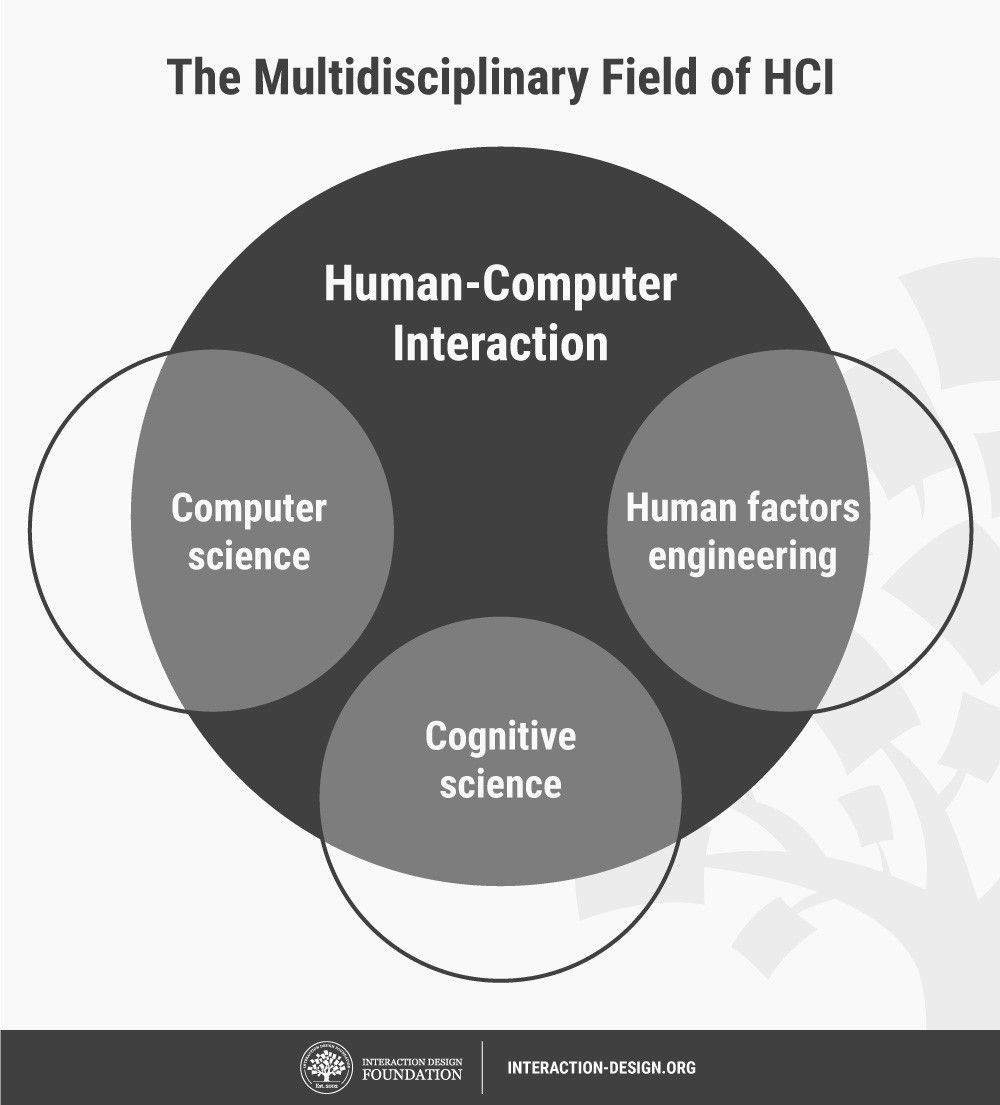




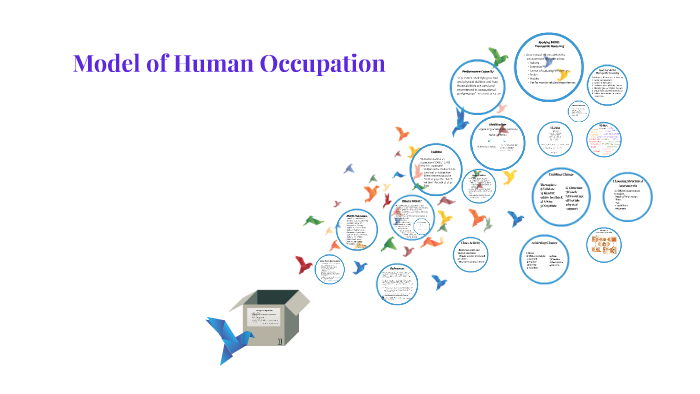





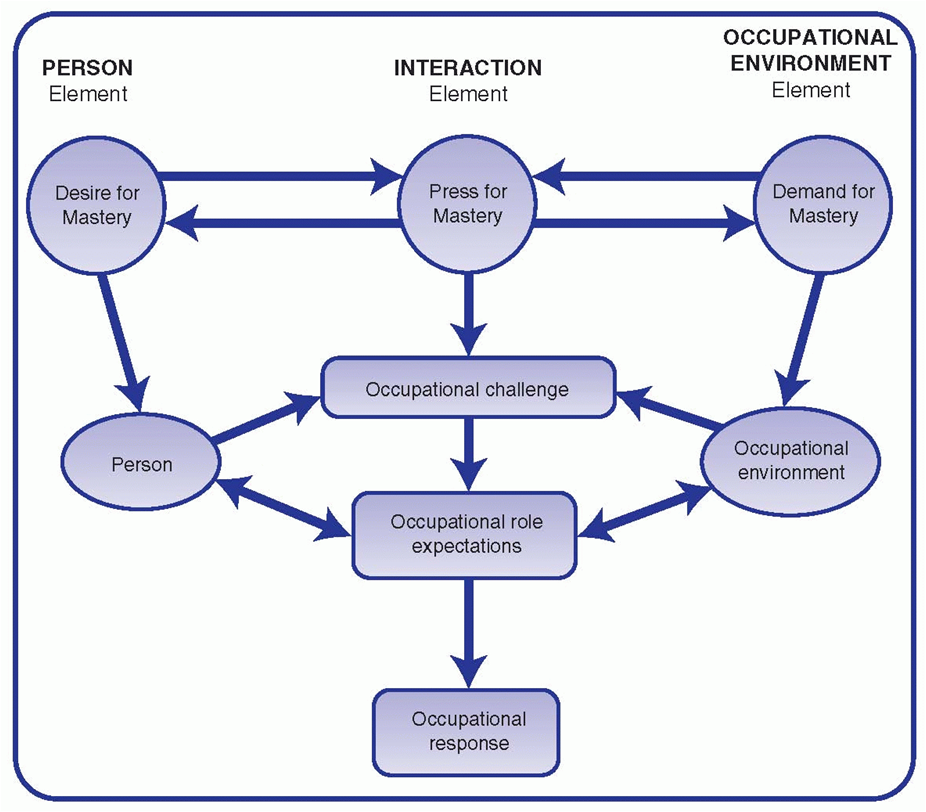

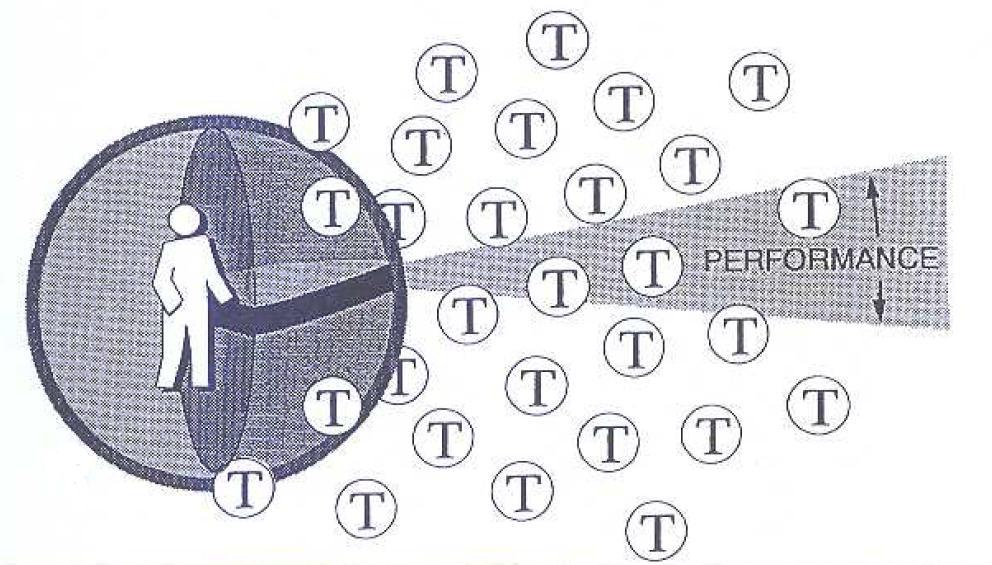
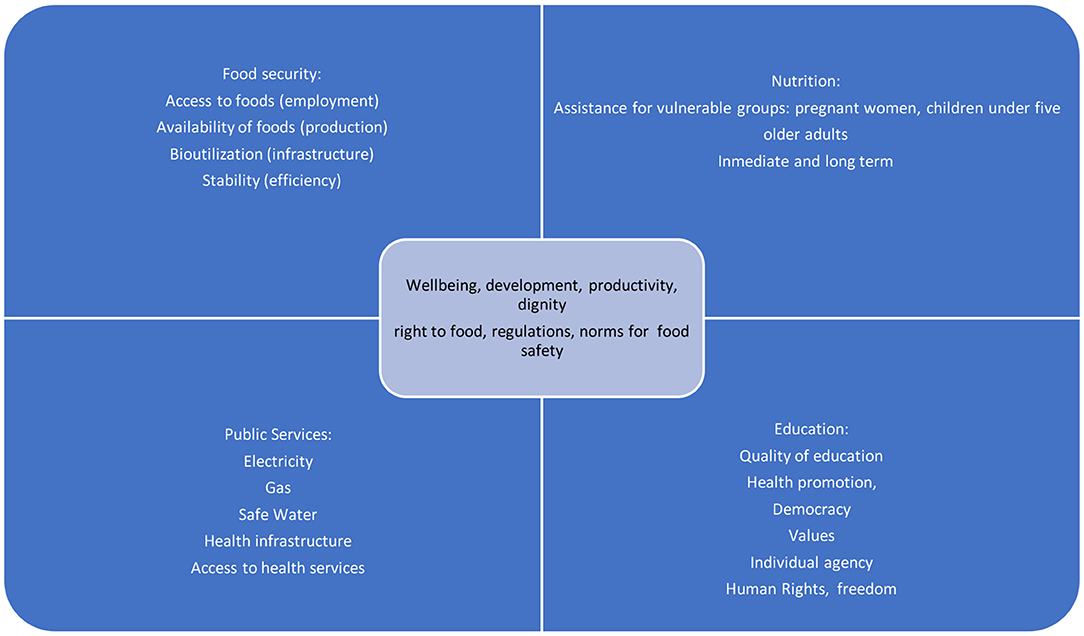
Komentar
Posting Komentar